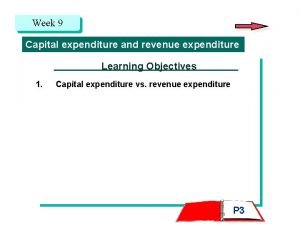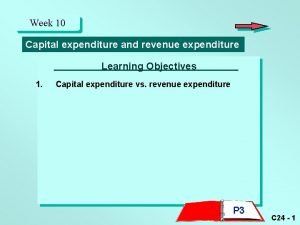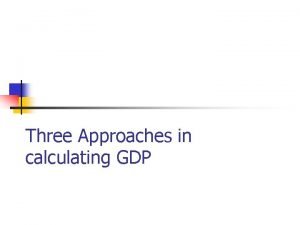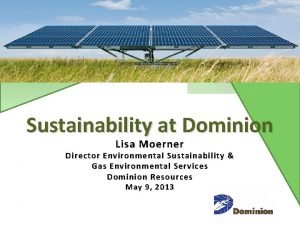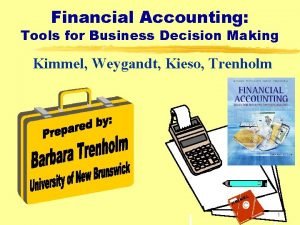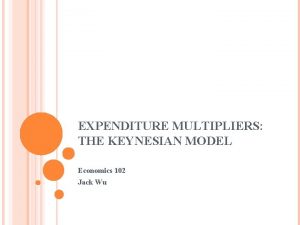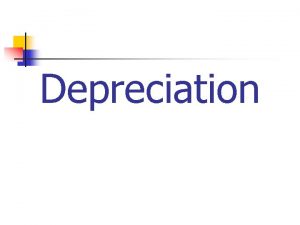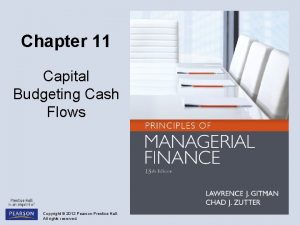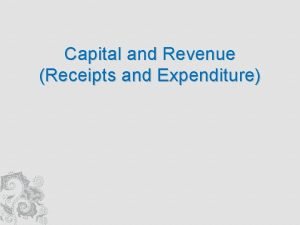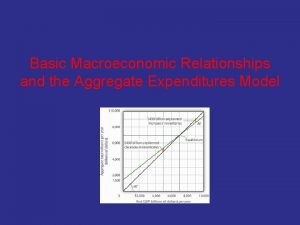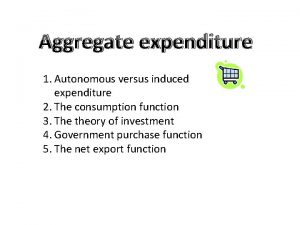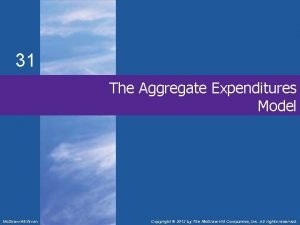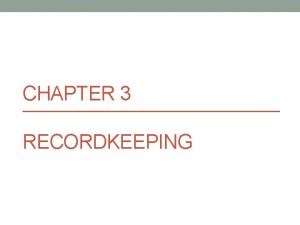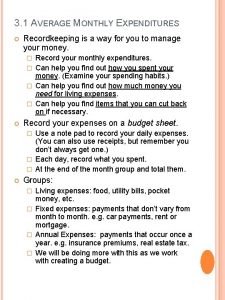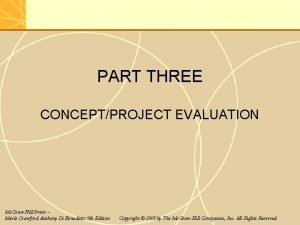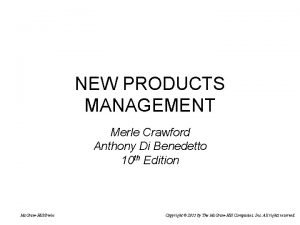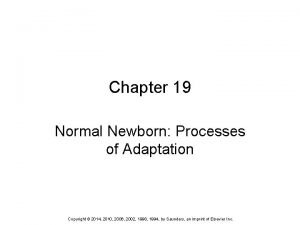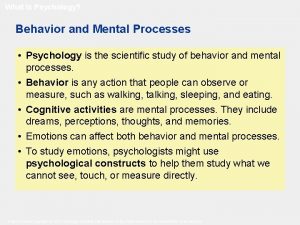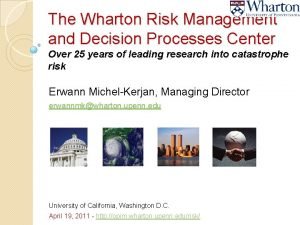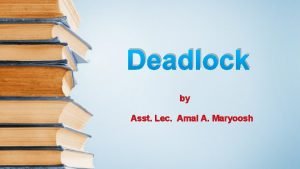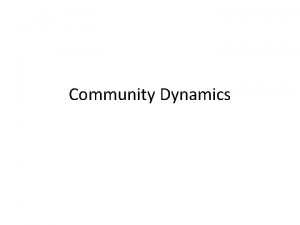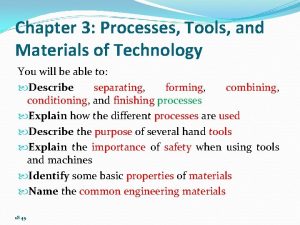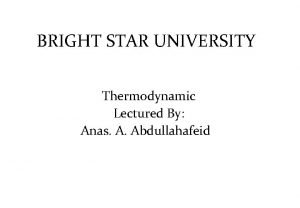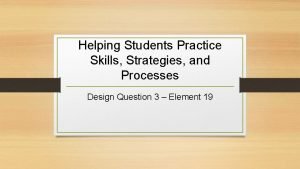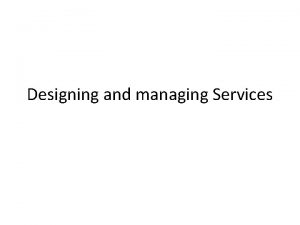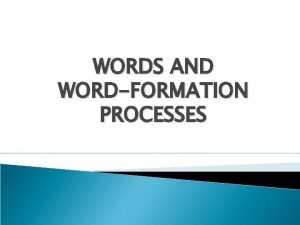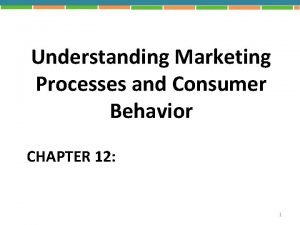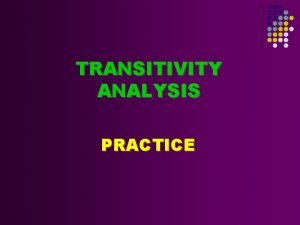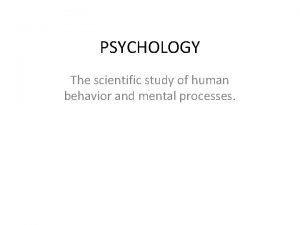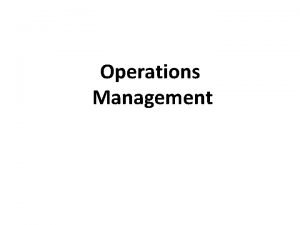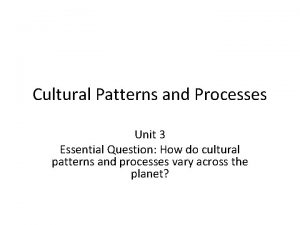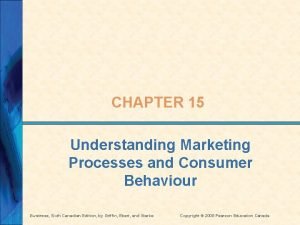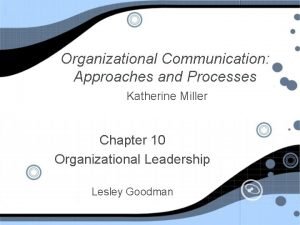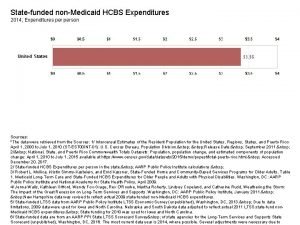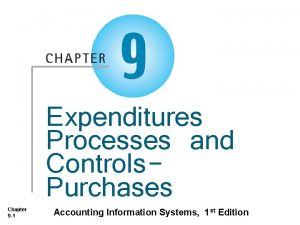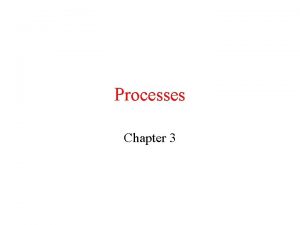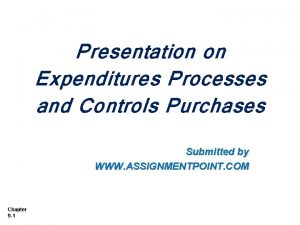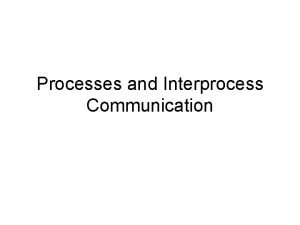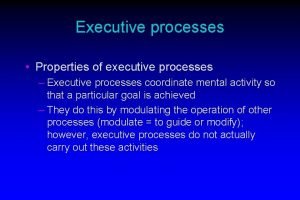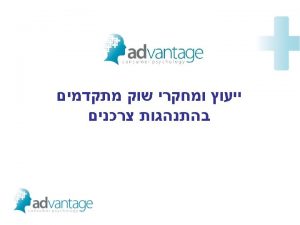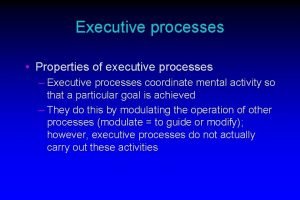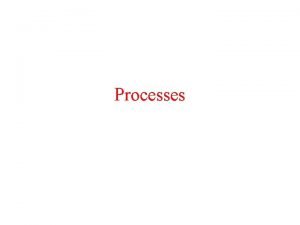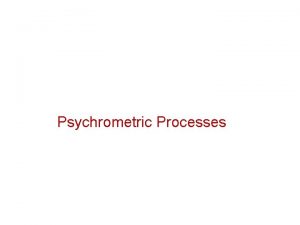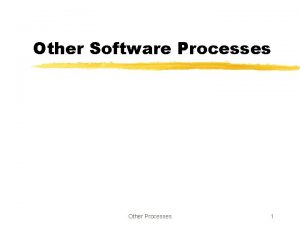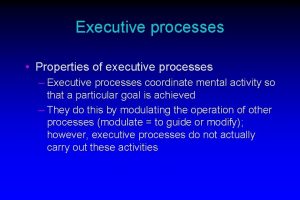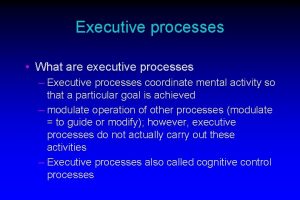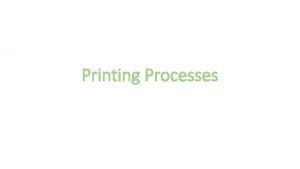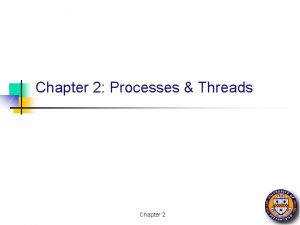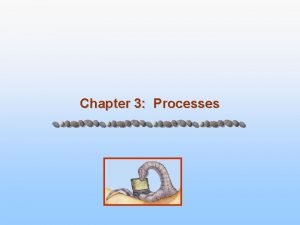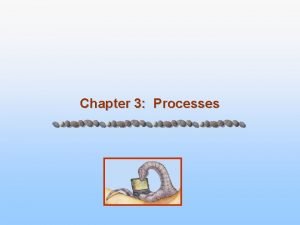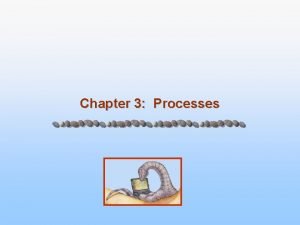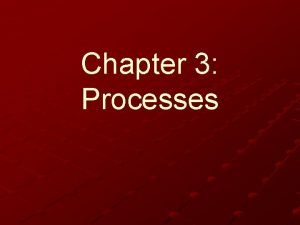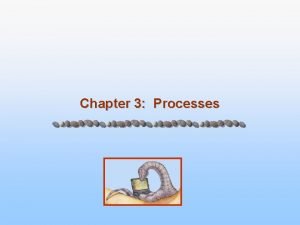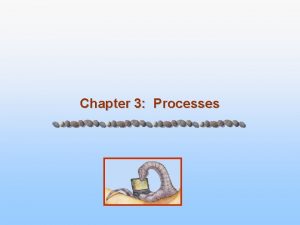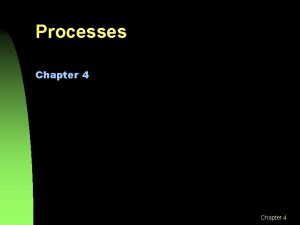Chapter 10 1 Expenditures Processes and ControlsPayroll and






































- Slides: 38

Chapter 10 -1 Expenditures Processes and Controls-Payroll and Fixed Assets Accounting Information Systems

Study Objectives 1. An introduction to payroll and fixed asset processes 2. Payroll processes 3. Risks and controls in payroll processes 4. IT systems of payroll processes 5. Fixed asset processes 6. Risks and controls in fixed asset processes 7. IT Systems of fixed asset processes 8. Ethical issues related to payroll and fixed assets processes 9. Corporate governance in payroll and fixed assets processes Chapter 10 -2

Introduction to Payroll and Fixed Asset Processes Payroll processes Ø Acquiring and maintaining human resources. Ø Capturing and maintaining employee data. Ø Paying employees. Ø Recording cash and payroll liabilities and expenses. Fixed asset processes Ø Purchasing property. Ø Capturing and maintaining relevant data about assets. Ø Paying for and recording the related assets. Ø Recording depreciation and other expenses. Ø Accounting for gains or losses. Chapter 10 -3 SO 1 An introduction to payroll and fixed asset processes

Introduction to Payroll and Fixed Asset Processes Various risks Recorded expenditures may not be valid. Transactions may be recorded in the wrong amount. Valid expenditure transactions may have been omitted. Transactions may have been recorded in the wrong employee or vendor account. Transactions may not have been recorded in a timely manner. Transactions may not have been accumulated or transferred to the accounting records correctly. Chapter 10 -4 SO 1 An introduction to payroll and fixed asset processes

Payroll and Fixed Asset Processes Exhibit 10 -1 Expenditure Processes within the Overall System Chapter 10 -5 SO 1 Payroll and fixed asset processes

Introduction to Payroll and Fixed Asset Processes Quick Review Which of the following statements about payroll and fixed asset processes is true? a. Both have only routine processes. b. Both have only nonroutine processes. c. Both have routine and nonroutine processes. d. Payroll has only routine processes, while fixed asset has only nonroutine processes Chapter 10 -6 SO 1 An introduction to payroll and fixed asset processes

Payroll Processes Terminology Ø Human resources department Ø Organization chart Ø Time sheet Ø Payroll register Ø Payroll disbursements journal Chapter 10 -7 SO 2 Payroll processes

Payroll Processes Exhibit 10 -3 Payroll Process Map Chapter 10 -8 See next slide for larger image. SO 2 Payroll processes

Payroll Processes Exhibit 10 -3 Payroll Process Map Chapter 10 -9 SO 2 Payroll processes

Payroll Processes Exhibit 10 -3 Payroll Process Map Chapter 10 -10 SO 2 Payroll processes

Payroll Processes Quick Review For a given pay period, the complete listing of paychecks for the pay period is a a. payroll register. b. payroll ledger. c. payroll journal. d. paymaster. Chapter 10 -11 SO 2 Payroll processes

Payroll Processes Quick Review A payroll voucher a. authorizes an employee paycheck to be written. b. authorizes the transfer of cash from a main operating account to a payroll account. c. authorizes the transfer of cash from a payroll account to a main operating account. d. authorizes the paymaster to distribute paychecks. Chapter 10 -12 SO 2 Payroll processes

Risks and Controls in Payroll Processes Common procedures associated with the payroll process: Ø Authorization of transactions Ø Segregation of duties Ø Adequate records and documents Ø Security of assets and documents Ø Independent checks and reconciliation Ø Cost-benefit considerations Chapter 10 -13 SO 3 Risks and controls in payroll processes

Risks and Controls in Payroll Processes Quick Review For proper segregation of duties, the department that should authorize new employees for payroll would be a. payroll. b. human resources. c. cash disbursement. d. general ledger. Chapter 10 -14 SO 3 Risks and controls in payroll processes

Risks and Controls in Payroll Processes Quick Review Internal control problems would be likely to result if a company’s payroll department supervisor was also responsible for a. reviewing authorization forms for new employees. b. comparing the payroll register with the batch transmittal data. c. authorizing changes in employee pay rates. Chapter 10 -15 d. hiring subordinates to work in the payroll department. SO 3 Risks and controls in payroll processes

Risks and Controls in Payroll Processes Quick Review Which of the following departments or positions most likely would approve changes in pay rates and deductions from employee salaries? a. Human resources b. Treasurer c. Controller d. Payroll Chapter 10 -16 SO 3 Risks and controls in payroll processes

IT Systems of Payroll Processes Payroll requires routine mathematical calculations and storing of a large volume of data regarding Ø employees, deductions, Ø vacation days, Some organizations outsource payroll processing. Ø sick days, and Ø other data. IT systems can include Ø payroll and human resources software, Ø automated timekeeping, Ø Internet-based timekeeping, and Ø electronic transfer of funds. Chapter 10 -17 SO 4 IT systems of payroll processes

IT Systems of Payroll Processes Quick Review An integrated IT system of payroll and human resources may have extra risks above those of a manual system. Passwords and access logs are controls that should be used in these integrated systems to lessen the risk of a. hardware failures. b. erroneous data input. c. payroll data that does not reconcile to time cards. d. unauthorized access to payroll data. Chapter 10 -18 SO 4 IT systems of payroll processes

Fixed Assets Processes Fixed assets may include the following: vehicles, office equipment and computers, machinery and production equipment, furniture, and real estate (such as land buildings). Chapter 10 -19 SO 5 Fixed asset processes

Fixed Assets Processes Fixed Asset Acquisitions Initiated by user department. Large cash outlays sometimes required. Non-routine transactions that require specific authorization. Capital budget. Fixed asset subsidiary ledger. Chapter 10 -20 SO 5 Fixed asset processes

Fixed Assets Processes Fixed Asset Continuance Involves: Updating cost data for improvements Updating estimated figures as needed Adjusting for periodic depreciation Keeping track of physical location of assets Depreciation schedule Chapter 10 -21 SO 5 Fixed asset processes

Fixed Assets Processes Fixed Asset Disposals Four Basis Steps: Chapter 10 -22 1. Date of disposal is noted, and depreciation computations updated through this date. 2. Disposed assets are removed from fixed asset subsidiary ledger. 3. Related depreciation accounts are removed. 4. Gains or losses are computed. SO 5 Fixed asset processes

Fixed Assets Processes Exhibit 10 -11 Fixed Asset Disposal Process Map Chapter 10 -23 See next slide for larger image. SO 5 Fixed asset processes

Fixed Assets Processes Exhibit 10 -11 Fixed Asset Disposal Process Map Chapter 10 -24 SO 5 Fixed asset processes

Fixed Assets Processes Exhibit 10 -11 Fixed Asset Disposal Process Map Chapter 10 -25 SO 5 Fixed asset processes

Fixed Assets Processes Quick Review The purchase of fixed assets is likely to require different authorization processes than the purchase of inventory. Which of the following is not likely to be part of the authorization of fixed assets? a. Specific authorization b. Inclusion in the capital budget c. An investment analysis or feasibility analysis of the purchase d. Approval of the depreciation schedule Chapter 10 -26 SO 5 Fixed asset processes

Risks and Controls in Fixed Assets Processes Authorization of Transactions Three Formal Steps: 1. Investment analysis 2. Comparison with the capital budget 3. Review of the proposal and specific approval Exhibit 10 -13 Fixed Asset Approval Levels Chapter 10 -27 SO 6 Risks and controls in fixed asset processes

Risks and Controls in Fixed Assets Processes Common procedures associated with the fixed asset process: Ø Authorization of transactions Ø Segregation of duties Ø Adequate records and documents Ø Security of assets and documents Ø Independent checks and reconciliation Ø Cost-benefit considerations Chapter 10 -28 SO 6 Risks and controls in fixed asset processes

Risks and Controls in Fixed Assets Processes Quick Review Which of the following is not a part of “adequate documents and records” for fixed assets? a. Fixed asset journal b. Fixed asset subsidiary ledger c. Purchase order d. Fixed asset tags Chapter 10 -29 SO 6 Risks and controls in fixed asset processes

Risks and Controls in Fixed Assets Processes Quick Review Which of the following questions would be least likely to appear on an internal control questionnaire regarding the initiation and execution of new PP&E purchases? a. Are requests for repairs approved by someone higher than the department initiating the request? b. Are prenumbered purchase orders used and accounted for? c. Are purchase requisitions reviewed for consideration of soliciting competitive bids? d. Is access to the assets restricted and monitored? Chapter 10 -30 SO 6 Risks and controls in fixed asset processes

Risks and Controls in Fixed Assets Processes Quick Review Which of the following reviews would be most likely to indicate that a company’s property, plant, and equipment accounts are not understated? a. Review of the company’s repairs and maintenance expense accounts. b. Review of supporting documentation for recent equipment purchases. c. Review and recomputation of the company’s depreciation expense accounts. d. Review of the company’s miscellaneous revenue account. Chapter 10 -31 SO 6 Risks and controls in fixed asset processes

IT Systems of Fixed Assets Processes The efficiency and effectiveness of accounting for fixed assets can be greatly improved through the use of specialized asset management software. Such software simplifies the Ø record keeping regarding location and description of fixed assets, Ø depreciation and maintenance records, Ø audit trail, and Ø linkages to the general ledger. Chapter 10 -32 SO 7 IT systems of fixed assets processes

IT Systems of Fixed Assets Processes Quick Review Which of the following is not an advantage of fixed asset software systems when compared with spreadsheets? a. Better ability to handle nonfinancial data such as asset location b. Easier to apply different depreciation policies to different assets c. Manual processes to link to the general ledger d. Expanded opportunities for customized reporting Chapter 10 -33 SO 7 IT systems of fixed assets processes

Ethical Issues Related to Payroll and Fixed Assets Processes Typical sources of time sheet falsifications: Ø Exaggeration of hours worked Ø Falsification of overtime or holiday time worked Ø Falsification of sales in order to increase commission payouts Ø Overstatement of job-related expenses Chapter 10 -34 SO 8 Ethical issues related to payroll and fixed assets processes

Ethical Issues Related to Payroll and Fixed Assets Processes Ghost Employee Clues that a ghost employee may exist: Ø Payroll register identifies paychecks without adequate tax withholdings. Ø Personnel files contain duplicate addresses, Social Security numbers, or bank account numbers. Ø Payroll expenses are over budget. Ø Paychecks not claimed when paymaster distributes. Ø Paychecks contain dual endorsements. Chapter 10 -35 SO 8 Ethical issues related to payroll and fixed assets processes

Ethical Issues Related to Payroll and Fixed Assets Processes Fixed asset information is more likely to be manipulated by management to unethically enhance the financial statements. Often, this occurs when management misclassifies expenses as fixed asset purchases. Chapter 10 -36 SO 8 Ethical issues related to payroll and fixed assets processes

Ethical Issues Related to Payroll Quick Review The term “ghost employee” means that a. hours worked has been exaggerated by an employee. b. false sales have been claimed to boost commission earned. c. overtime hours have been inflated. d. someone who does not work for the company receives a paycheck. Chapter 10 -37 SO 8 Ethical issues related to payroll and fixed assets processes

Corporate Governance in Payroll and Fixed Assets Processes In addition to the need for ü strong management oversight, ü internal controls, and ü ethical practices, corporate managers must recognize their responsibility to be good stewards of the assets underlying the payroll and fixed assets processes. Chapter 10 -38 SO 9 Corporate governance in payroll and fixed assets processes
 Concurrent processes are processes that
Concurrent processes are processes that Revenue expenditure vs capital expenditure
Revenue expenditure vs capital expenditure Examples of revenue and capital expenditure
Examples of revenue and capital expenditure Expenditure approach formula
Expenditure approach formula Environmental expenditures
Environmental expenditures Lump sum tax
Lump sum tax Daily cash expenditures
Daily cash expenditures Consumption expenditures formula
Consumption expenditures formula Capital expenditures in accounting
Capital expenditures in accounting Benefits expected from proposed capital expenditures
Benefits expected from proposed capital expenditures Deferred revenue expenditure
Deferred revenue expenditure Aggregate expenditure model
Aggregate expenditure model Autonomous expenditures
Autonomous expenditures Aggregate expenditures model
Aggregate expenditures model Section 3-1 average monthly expenditures answer key
Section 3-1 average monthly expenditures answer key Section 3-1 average monthly expenditures
Section 3-1 average monthly expenditures Cumulative expenditures curve
Cumulative expenditures curve Cumulative expenditures curve
Cumulative expenditures curve Types of jaycustomers
Types of jaycustomers Chapter 19 normal newborn processes of adaptation
Chapter 19 normal newborn processes of adaptation Study of behavior and mental processes
Study of behavior and mental processes Wharton risk management and decision processes center
Wharton risk management and decision processes center A system has 12 magnetic tape drives and 3 processes
A system has 12 magnetic tape drives and 3 processes Community processes dynamics and empowerment
Community processes dynamics and empowerment Technology tools and equipment names
Technology tools and equipment names Irreversible process in thermodynamics
Irreversible process in thermodynamics Information processes and technology hsc
Information processes and technology hsc Helping students practice skills, strategies, and processes
Helping students practice skills, strategies, and processes Designing and managing service
Designing and managing service Word formation processes clipping examples
Word formation processes clipping examples Marketing processes and consumer behavior
Marketing processes and consumer behavior Participants processes and circumstances
Participants processes and circumstances The scientific study of behavior and mental processes
The scientific study of behavior and mental processes Input-transformation-output model restaurant
Input-transformation-output model restaurant Glacier terms
Glacier terms Cultural patterns and processes
Cultural patterns and processes Concasse cut size in mm
Concasse cut size in mm Marketing processes and consumer behavior
Marketing processes and consumer behavior Organizational communication approaches and processes
Organizational communication approaches and processes

